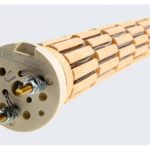Those who at least once thought about choosing a boiler, certainly came across such a concept as a dry heating element in a water heater. What is it and how is it different from the traditional "wet" version. Today we will tell you how a water heater with a dry heating element works, discuss the advantages and disadvantages of such a device, and also bring to your attention the TOP 5 best models of 2019.
The main differences
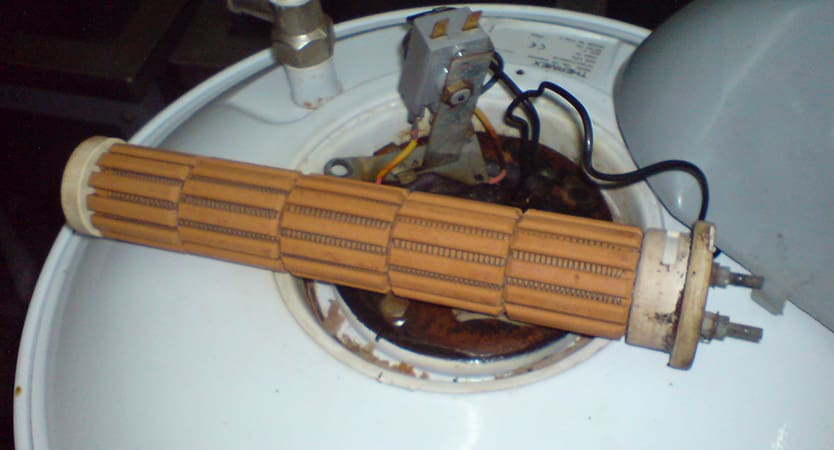
First, let's take a look at what a dry heating element means in a water heater. Such models of boilers appeared on our market a little over 10 years ago. Since then, they have been gaining more and more popularity among the owners of summer cottages, apartments and country houses, deprived of centralized hot water supply services.
Until that time, the most common design option was a submersible or "wet" heating element. Such a device most of all resembles an ordinary household boiler, only of a huge size. This is a hollow steel or copper tube in which a nichrome spiral is placed. The free internal space is filled with quartz sand or other similar material with high thermal conductivity. The entire structure is placed directly into the tank and comes into direct contact with the water it heats. The disadvantage of such a device is the increased formation of scale directly on the walls of the heating element, due to which the rate of heat transfer decreases and the consumption of electrical energy increases.
Dry heating element is arranged fundamentally differently. It consists of a rheostat wire placed in the grooves of a ceramic insulator. To exclude contact with water, the entire structure is placed in a closed flask made of metal with an anti-corrosion coating. To enhance thermal conductivity, an oil layer is additionally placed between the glass walls and the heater.
TOP-3 best water heaters with dry heating elements Electrolux
- Electrolux EWH 50 Formax DL
- Electrolux EWH 100 Royal Flash
- Electrolux EWH 100 Centurio IQ 2.0
![]() See also - Which company water heater is better to choose
See also - Which company water heater is better to choose
Benefits
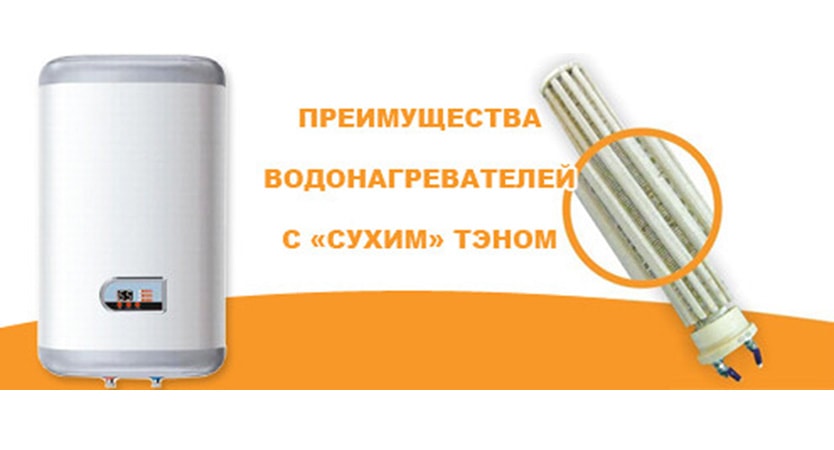
Dry designs have many advantages over open "boilers". For example, consider just a few of them:
Lack of scale on the heating element
The rate of formation of this unpleasant layer is influenced by the quality of the water and the surface area of contact between the heater and the liquid. The harder the water supply in your area, the faster the scale will form. A thick lime layer reduces the quality of water heating, and the life of the heating element decreases.
A dry heating element is protected from this kind of trouble. In this case, direct contact with water does not occur. This means that there is no scale on the heater either.
Compact dimensions
Dry heating element is relatively small and takes up much less space than its “wet” counterpart. Thus, the size of the storage tank itself is reduced. Most often, manufacturers install two or even three heaters in one device. This allows the consumer to independently regulate the load.If you need to quickly heat up a large volume of water, turn on all the heating elements at once and you will get hot water in just a few minutes.
Even if one of the heaters burns out, nothing bad will happen. For the period of repair, you will simply use one of the remaining ones and still be left with hot water.
Excellent performance
This is another advantage of dry heating elements. Since there is practically no scale formation on such a heater, the rate of obtaining hot water is significantly increased. At the same time, much less electricity is spent than when heating water with a "wet" heating element.
By itself, each dry heating element installed in the boiler most often has a lower power than that of a similar version with a "wet" element. But since several heating elements are usually used in water heaters of this type, the total power will be significantly lower than that of a "wet" tubular heater. And whether to use it in full or in part, the consumer can decide for himself.
TOP-3 best water heaters with dry heating elements Timberk
- Timberk SWH FED1 80 V
- Timberk SWH RE15 50 V
- Timberk SWH RED1 100 V
Ease of service
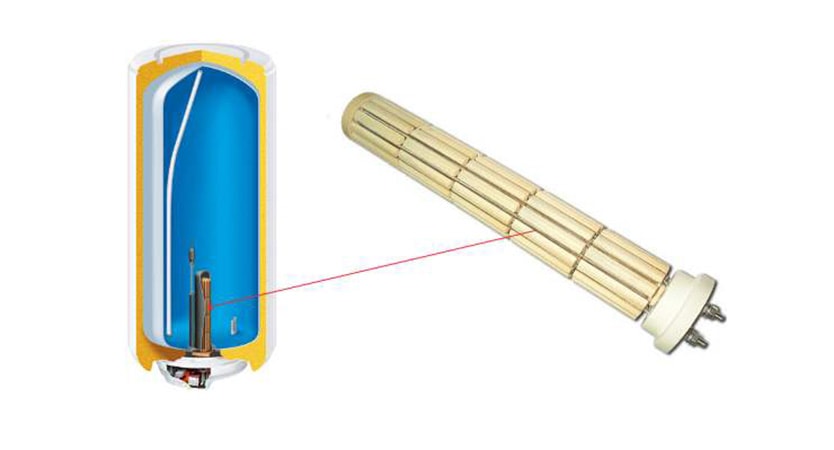
Dry tubular element water heaters have one important feature. They are arranged in such a way that if the heating element suddenly fails, you don't even have to drain the water from the tank to replace it. It is enough to screw on the protective flange, remove the element, inspect or repair it and insert it back.
Long service life
Due to the lack of contact with scale, dry heating elements have a long service life. One such element is sufficient on average for 5 years of uninterrupted operation. While boilers with conventional heating elements fail every 2-3 years. At current prices for components, this is a big savings.
Dry start protection
Absolutely all models with a dry heater are equipped with a protection system against switching on without water. If there is no water in the heater tank, the system simply will not allow the unit to turn on. Dry start protection will prevent the tubular heater from burning out. Even if for some reason it does not work, the breakdown will only affect the heating element. Other boiler systems will not be affected.
Variability
Many dry heating elements have a completely identical design. This allows the use of the same element for different tank models. So in case of repair, you will not have problems with components.
No problems with air locks
Water heaters equipped with dry heating elements are not threatened with the formation of internal air jams. For models with wet heaters, this can result in costly repairs.
![]() See also - Choosing a solid fuel boiler for long burning: rating of the 10 best boilers
See also - Choosing a solid fuel boiler for long burning: rating of the 10 best boilers
disadvantages
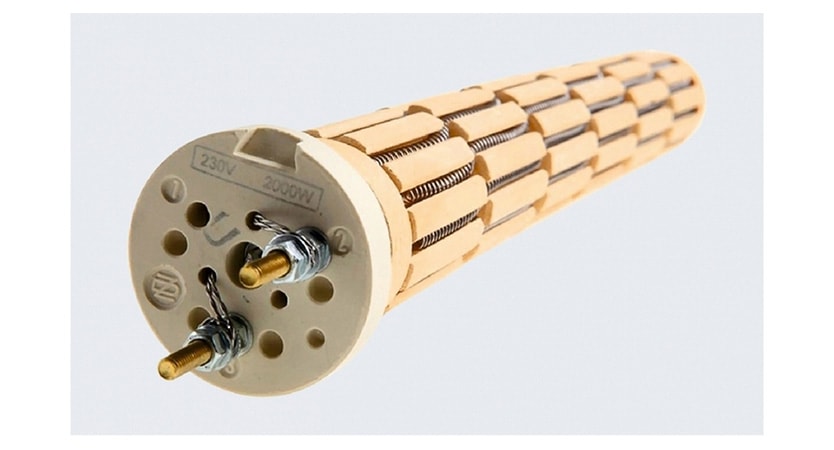
Since there are no ideal things in nature, that is, dry heating elements have negative sides. True, there are not so many of them.
Dry heating element can be extremely straightforward. Therefore, they are used in models with a volume of at least 30 liters. So if you need to buy a "baby" for 10–20 liters, this option will not work.
But the main disadvantage of dry heating elements is its high cost. Models equipped with such a heating element usually cost no less than one and a half times more expensive than traditional water heaters with a "boiler". Whether such an aggregate is worth the money spent on it, everyone must decide for themselves.
Review of the best models
If you nevertheless decide to give preference to a storage water heater with a dry heating element, we bring to your attention the TOP 5 best models of 2019.
Atlantic vertigo

An innovative model of co-production between Egypt and France. The design of this water heater is unique and so far no trademark has been able to repeat it. "Vertigo" has two enamelled water tanks at once. The unit operates absolutely silently and is controlled using an intuitive digital interface.
Advantages:
- equipped with a thermostat, which will allow you to heat water only to the required temperature;
- for those who are in a hurry, there is a fast heating Boost;
- the smart unit remembers the settings and turns on the device in Smart-mode with the parameters that the user calls in most often;
- wide model range, up to 80 liters inclusive;
- long work is ensured by the presence of dry heating elements and a magnesium anode;
- there is a possibility of both vertical and horizontal installation;
- tank warranty period - 7 years;
- all models have a maximum depth of 30 cm.
Disadvantages:
- the size range does not include models with a volume of more than 80 liters, which can be inconvenient for a large family.
See also:
- Top 6 Hotpoint-Ariston Water Heaters
- The 8 best Zanussi water heaters of 2019
- The 8 best Thermex water heaters of 2019
- 10 best Timberk water heaters of 2019
- 10 best Gorenje water heaters of 2019
Electrolux EWH 50 Formax DL
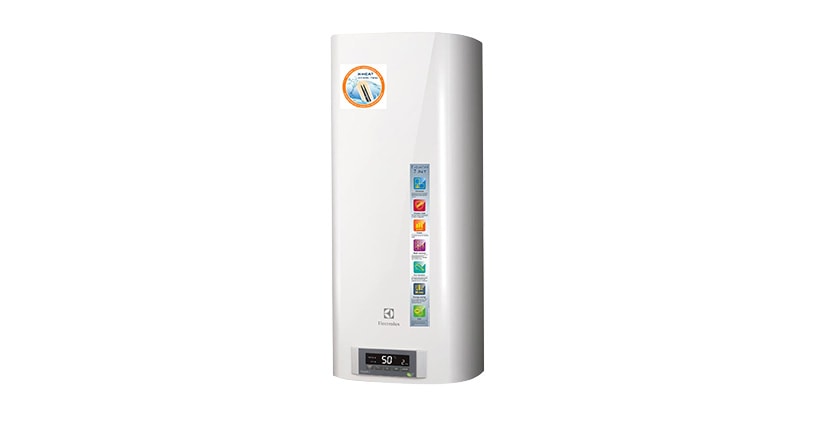
Electric water heater with two dry-type heating elements, with a capacity of 1.2 and 0.8 kW. There is an informative digital display and a function of three-mode regulation of the heating temperature. The maximum heating of water is up to 75 C, the optimum operating temperature is 55 C. The tank has a sufficiently thick layer of polyurethane (22 mm) to protect it from freezing.
Pros:
- good thermal effect, water stays hot for a long time;
- compact dimensions;
- three operating modes;
- quick heating of water to the desired temperature;
- aesthetic appearance;
- quite affordable cost.
Minuses:
- no obvious shortcomings have been identified based on feedback from users and specialists.
Fagor CB ECO
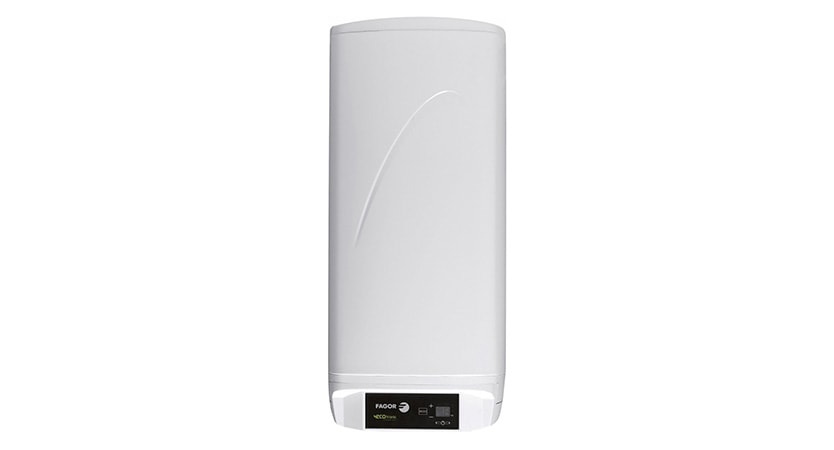
High quality water heater from a Spanish manufacturer. Equipped with two dry fuel cells of 1.2 or 0.8 kW, depending on the volume of the tank. There is a wide range from 30 to 200 liters of tank volume. The unit design provides for several control modes. Depending on the set parameters, the heating elements can work in pairs, one by one or in automatic mode.
Benefits:
- wide range of models;
- Heating elements operating on the principle of dry heating;
- improved thermal insulation system;
- titanium anode that does not require replacement;
- durable steel tank with additional titanium dusting;
- provides for the possibility of horizontal and vertical installation;
- long warranty periods;
- electronic regulation allows temperature control to the nearest degree.
Disadvantages:
- in ECO mode, it is not possible to independently set the desired temperature;
- the power cord is not long enough.
Gorenje OGBS100SMV9
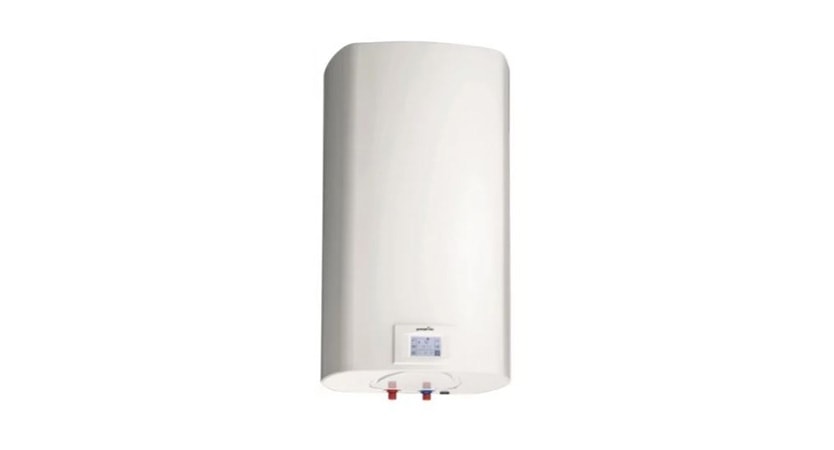
Not a bad middle class water heater from a Serbian manufacturer. The model has a flat white body that is compatible with almost any interior design. The model is equipped with a modern overheating system, which excludes accidental switching on with an empty tank. To protect against corrosion, a magnesium anode is installed in the tank.
Pros:
- electronic control system;
- dry heating element;
- "Smart" system for storing regular user settings;
- wide range from 30 to 120 liters;
- maximum heating temperature + 85C;
- affordable pricing policy.
Minuses:
- there is only a vertical installation method;
- the inside of the tank is coated with enamel.
Willer Elegance IVB DR
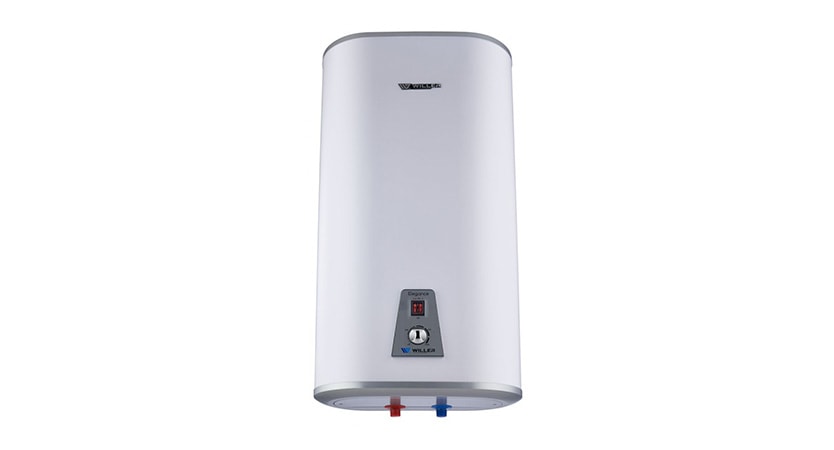
Another model of Serbian origin. This storage water heater also belongs to the middle class. This slim and compact boiler is only 30 cm deep, so it fits even into a small niche in a bathroom or toilet.
Viller Elegance is a very economical device. To conserve electricity, there is a thick thermal insulation and a special "Eco" mode. In this case, the water does not heat up above 45 C, which means that the meter does not wind up extra kilowatts.
Advantages:
- three dry heating elements, 0.8 kW each;
- the ability to use heaters both in pairs and separately;
- choice of models for 50, 80 and 100 liters;
- simple and intuitive control unit;
- the storage tank is made of stainless steel;
- pleasant appearance;
- affordable cost.
Disadvantages:
- not very popular brand in the domestic market.
As can be seen from all of the above, storage water heaters with dry heating elements are gaining more and more popularity. Today, such models are produced by every more or less self-respecting manufacturer. So if you decide to purchase a boiler with a dry heating element, in any store you will be offered a decent choice.
See also:
- 10 best instantaneous water heaters
- 11 best water heaters for home according to user reviews
- 12 best Electrolux water heaters of 2019
- 15 best electric storage water heaters
- 19 best indirect heating boilers according to customer reviews

